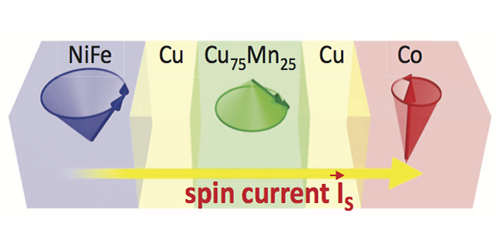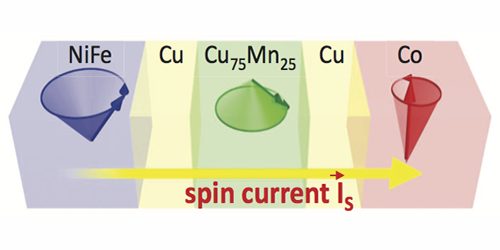Watching Spin Currents
Future spintronic circuits will use the spin orientation of an electron current to store and manipulate information. Such spin-polarized currents, however, cannot be directly observed and are typically characterized using indirect techniques. Zi Qiu at the University of California, Berkeley, and colleagues have now demonstrated that x-ray pulses from a synchrotron source can be used to measure the precession of spins in a material, which directly reveals the flow of a spin current. The technique allowed the researchers to observe a spin current as it propagated through different layers of materials.
Spin currents are generally probed using measurements of the effects they produce in the metals through which they flow. They can, for instance, create a voltage drop perpendicular to the direction of the spin current or a torque that turns the magnetization direction of a magnetic film. However, these indirect measurements are often ambiguous because they are influenced by factors other than the spin current, such as magnetic proximity effects.
Qiu and colleagues used a “pump-probe” technique to detect the spin current flowing between two thin ferromagnetic layers separated by a nonmagnetic spacer layer. A microwave “pump” was delivered to the sample, resonantly exciting the precession of the spins in the first layer. This precession injected an alternating current (ac) of spins into the spacer layer, which traveled towards the second magnetic layer. The spin precession of the ac spin current was monitored through the changes it caused in the absorption of circularly polarized “probe” x-ray pulses. By tuning the energy of the x rays to characteristic resonances of the atomic elements within the different layers, the researchers could selectively detect the spin current flowing in each layer.
This research is published in Physical Review Letters.
–Matteo Rini
Matteo Rini is the Deputy Editor of Physics.





